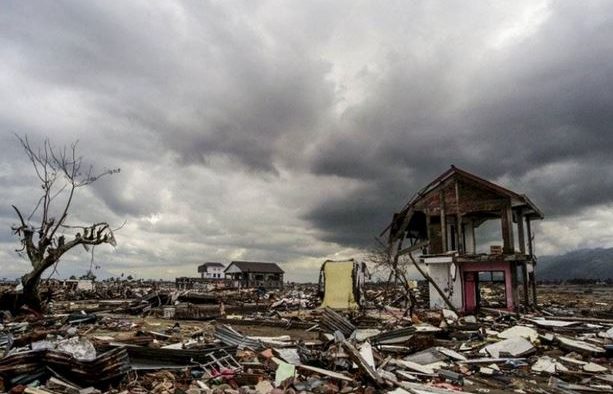Marking 10 years since Indian Ocean tsunami, UN says world better prepared for natural disasters

It has been ten years since a massive tsunami swept across the Indian Ocean killing more than 200,000 people and devastating coastline communities from Indonesia to Somalia. Today, the world is much better prepared to mitigate such disasters, senior United Nations officials have declared.
“Ten years after the Indian Ocean tsunami, the world has taken significant measures to make the world a safer place against disasters,” confirmed Margareta Wahlström, the head of the UN Office for Disaster Risk Reduction (UNISDR), in a press release issued today to mark the anniversary.
“We now have more efficient early warning systems and better evacuation procedures in place,” she added. “There is also greater understanding and awareness globally of the broad damage that disasters can inflict on our societies.”
The world’s worst recorded natural disaster hit the Asia Pacific region in December 2004, claiming the lives of 227,000 people and leaving the livelihoods of some 1.4 million survivors in tatters. While the immediate economic loss caused by the event was estimated at $9.9 billion, the tsunami has also inflicted long-term environmental and development harm as salt water contaminated the land, wiping out agriculture and damaging forests and ecosystems.
At the same time, the widespread devastation and sheer immensity of the disaster spurred the international community into immediate action. Just three weeks after the tsunami, countries united in Hyogo, Japan, to craft the Hyogo Framework for Action – the world’s first comprehensive agreement on disaster reduction.
“Since the Indian Ocean tsunami and the adoption of the Hyogo Framework for Action in 2005, there have been substantial changes in the global thinking regarding disaster risk reduction issues,” Ms. Wahlström, who helped coordinate the international disaster response a decade ago and is currently in the tsunami-affected region to attend commemorative events, continued.
“The tsunami acted as a wake-up call and made us understand how vulnerable we are to hazards. We cannot avoid natural hazards, but we know enough to certainly prevent them from becoming disasters.”
A “major life-saving measure” to emerge from the tsunami tragedy, the UNISDR press release noted, was the Indian Ocean Tsunami Warning System, which now provides alerts through three regional watch centres – in India, Indonesia and Australia – and via a network of 26 national tsunami information centres. In 2012, it disseminated early warnings within eight minutes of the Banda Aceh, Indonesia earthquake.
Meanwhile, Ms. Wahlström explained, another “great lesson” of the tsunami was that coastal urban areas should be built in “a more sustainable and responsible way,” ensuring that they are able to withstand the brunt of future hazards.
“We must become more intelligent and aware in managing the risks around the location of critical infrastructure in hazard prone areas, whether the threat comes from floods, storms, earthquakes, heat waves or something else.”…

